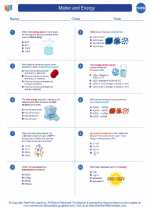Gold
Gold is a chemical element with the symbol Au (from Latin: aurum) and atomic number 79. It is a dense, soft, shiny, and highly malleable metal. Gold has been prized for its beauty, rarity, and value for thousands of years and is used in jewelry, currency, and as a symbol of wealth.
Basic Information
- Symbol: Au
- Atomic Number: 79
- Atomic Mass: 196.96657 u
- Category: Transition metal
- Group: 11
- Period: 6
- Electron Configuration: [Xe] 4f14 5d10 6s1
Physical and Chemical Properties
- Color: Metallic yellow
- Melting Point: 1,064°C
- Boiling Point: 2,700°C
- Density: 19.32 g/cm3
- Hardness: 2.5 on the Mohs scale
- Highly malleable and ductile
- Does not react with most chemicals, but can form compounds with cyanide and halogens
Occurrence and Uses
Gold is found in nature as nuggets or grains in rocks, rivers, and alluvial deposits. It is also found in the form of compounds in ores such as pyrite and calaverite. The primary uses of gold include:
- Jewelry and ornaments
- Currency and investment
- Electronics (due to its excellent conductivity)
- Medical applications (e.g., in dentistry)
Study Guide
To study gold effectively, consider the following key points:
- Understand the basic properties and characteristics of gold, including its atomic number, mass, and electron configuration.
- Learn about the physical and chemical properties of gold, such as its color, melting and boiling points, density, and reactivity.
- Explore the occurrence of gold in nature and its extraction from ores.
- Examine the various uses of gold in different industries and applications.
- Review the historical significance and cultural importance of gold throughout human civilization.
◂Chemistry Worksheets and Study Guides High School. Matter and Energy
Worksheet/Answer key Matter and Energy
Matter and Energy  Worksheet/Answer key
Worksheet/Answer key Matter and Energy
Matter and Energy  Worksheet/Answer key
Worksheet/Answer key Matter and Energy
Matter and Energy 

 Worksheet/Answer key
Worksheet/Answer key
 Worksheet/Answer key
Worksheet/Answer key

The resources above cover the following skills:
PHYSICAL SCIENCE (NGSS)
Matter and Its Interactions
Students who demonstrate understanding can:
Develop a model to illustrate that the release or absorption of energy from a chemical reaction system depends upon the changes in total bond energy.
Energy
Students who demonstrate understanding can:
Develop and use models to illustrate that energy at the macroscopic scale can be accounted for as either motions of particles or energy stored in fields.